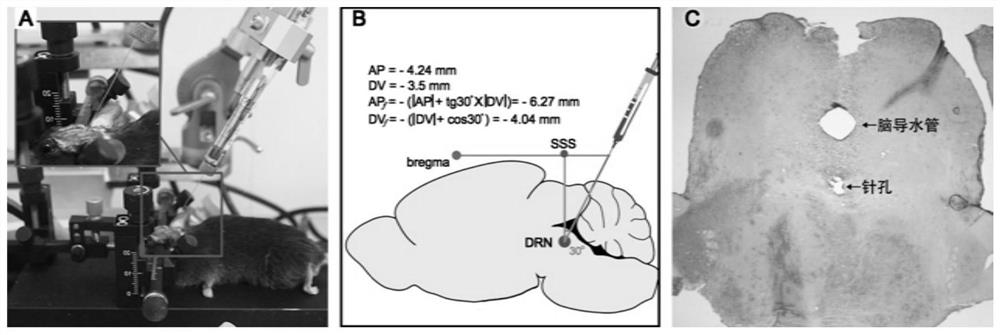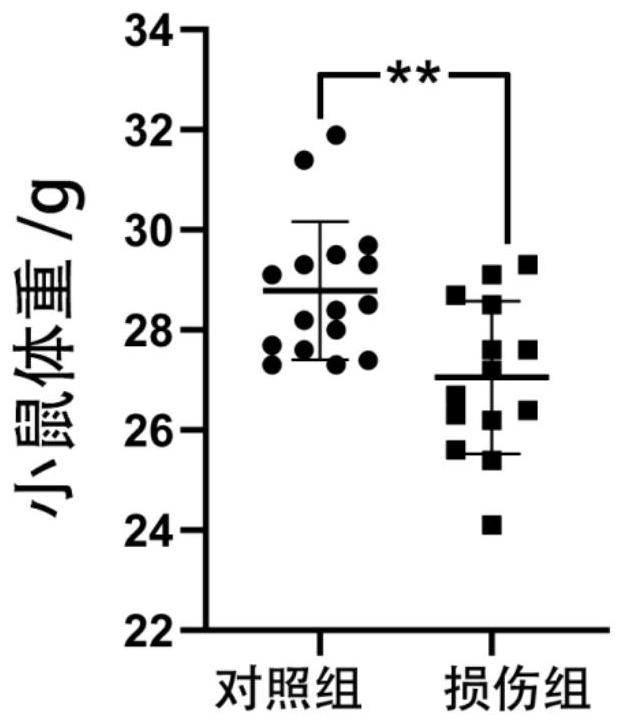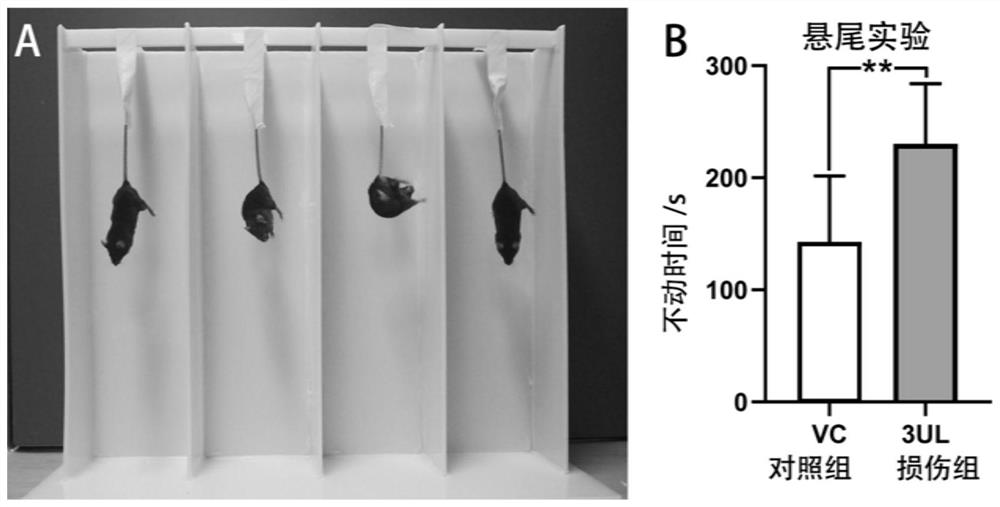Construction method of mouse depression model
A construction method and mouse technology, applied in the field of pathology experiments, can solve the problems of high animal mortality, long time, and heavy workload of modeling stress and depression models
- Summary
- Abstract
- Description
- Claims
- Application Information
AI Technical Summary
Problems solved by technology
Method used
Image
Examples
Embodiment 1
[0052] Example 1 Constructing a mouse model of depression
[0053] 1. Shave the head of the mouse, and fix the mouse on the operating table of the stereotaxic instrument.
[0054] 2. Dip 75% alcohol and povidone iodine in sequence with a cotton swab to disinfect the target area of the head after shaving. Mouse Eye Covering Dikro ophthalmic ointment was used to protect the mouse cornea.
[0055] 3. Unlock the Z-axis adjustment arm of the stereotaxic instrument, and adjust it to an angle of 30 degrees in the AP (anterior-posterior) direction (such as figure 1 A, B), locked.
[0056] 4. Adjust the line connecting the anterior fontanel and posterior fontanel to the level. Zero the coordinates on the digital readout.
[0057] 5. Place the Hamilton microsyringe sucking 3ul 5,7-DHT on the needle-holding arm of the stereotaxic instrument, adjust the needle-holding arm according to the coordinates (AP: -6.27mm), find the needle entry point, and mark it with a marker pen, Drill a...
Embodiment 2
[0062] Example 2: Mouse body weight monitoring
[0063] The growth status of the mice treated by the method of Example 1 was detected.
[0064] After 30 days of treatment, the body weight of the mice in the experimental group and the control group was measured, and the body weight changes were as follows: figure 2 shown.
[0065] It can be seen that the body weight of the two groups of mice showed a significant difference 30 days after injection (control group: 28.8±1.4vs. experimental group: 27.1±1.5g; P<0.05), and the body weight of the mice in the experimental group was significantly lower than that of the control group Group.
Embodiment 3
[0066] Embodiment 3: tail suspension experiment
[0067] The tail-suspension test is a commonly used method for detecting depression behavior in animals. When animals are in an unavoidable oppressive environment (tail suspension or forced swimming), they are constantly struggling but unable to escape, resulting in intermittent "immobility", which is a typical hopeless state similar to depression, so it is used Depressive behavior was assessed by "immobility time", and immobility time was positively correlated with depressive behavior. Hang the 3 / 4 of the tail of the mouse on a fixture (such as image 3 Shown in A), turn on the white noise device (to reduce the behavioral impact of other sounds on the mice), place the camera in a horizontal position in front, and shoot a video of 6 minutes and 10 seconds. For analysis, a timer was used to record the total time the mouse was "immobile" during the first 6 min of the video. The experimental results show that (such as image 3 ...
PUM
 Login to View More
Login to View More Abstract
Description
Claims
Application Information
 Login to View More
Login to View More - Generate Ideas
- Intellectual Property
- Life Sciences
- Materials
- Tech Scout
- Unparalleled Data Quality
- Higher Quality Content
- 60% Fewer Hallucinations
Browse by: Latest US Patents, China's latest patents, Technical Efficacy Thesaurus, Application Domain, Technology Topic, Popular Technical Reports.
© 2025 PatSnap. All rights reserved.Legal|Privacy policy|Modern Slavery Act Transparency Statement|Sitemap|About US| Contact US: help@patsnap.com



